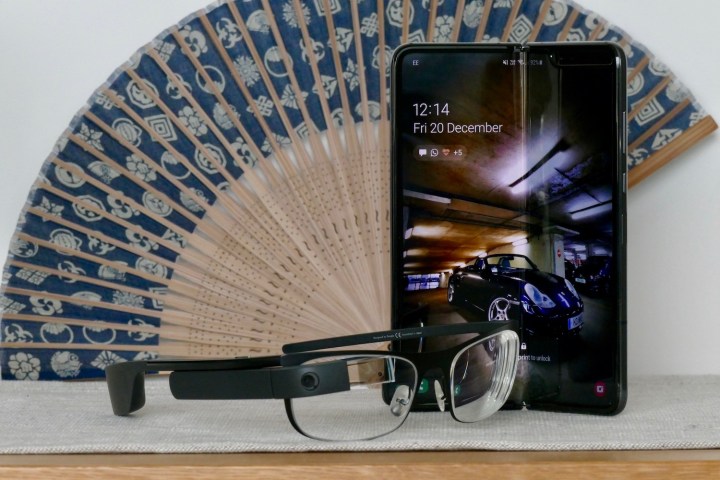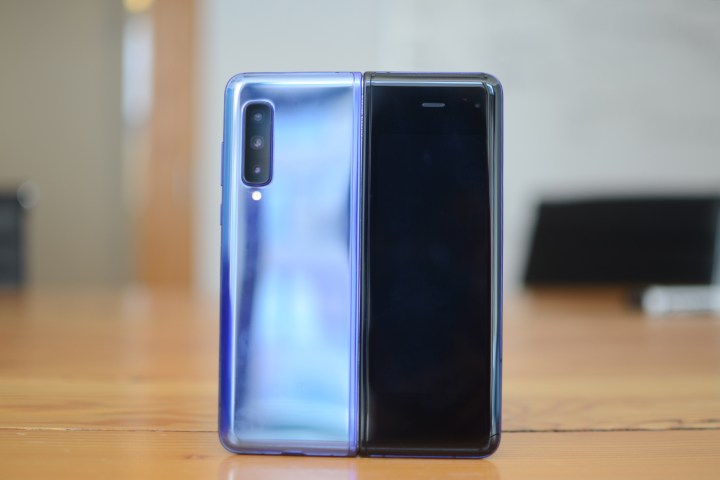
The last decade produced two pieces of technology that I absolutely adore, Google Glass and the Samsung Galaxy Fold, and although they are both obviously very different, there are some striking similarities between them.
Both show an amazing vision of the future, except only one of them will directly influence products we will actually go out and buy tomorrow. When we look closely, it reveals how attitudes have changed towards expensive, innovative new tech, along with a willingness to try them out, and an acceptance that flaws can be overcome. This resulted in one of them being pushed ahead, and the other unceremoniously pushed aside. That’s a great shame, and here’s why.
Desirability, and exclusivity

Only a very select few products cause me to think, “I simply must own that.” The first time I saw Google Glass, I got that feeling. When I eventually got the chance to try Google Glass, it was just so space-age, with the potential to be transformative, I needed to be a part of the journey, both personally and professionally.
The Galaxy Fold wasn’t love at first sight. Mainly because first sight was with it behind glass. It wasn’t until I got my hands on the Fold for the first time that I realised exactly how important it is. I wouldn’t have to change my life to use it properly, like the change forced by Google Glass; but instead it would make my digital life better, easier, and faster immediately.
Then there is the exclusivity, and the chance to introduce more people to new tech. It’s a fun aspect of my job. Google Glass was always a talking point, and contrary to what was usually written, all my interactions wearing it were positive. Many didn’t know what it was, and those who did were fascinated and excited when they tried them on. The Galaxy Fold is more recognisable, although for some reason nobody ever knows the device’s name and just calls it, “one of those new folding phones,” but are similarly excited when they open and close the Fold, and see the seamless app switching for the first time.
Both caused genuine excitement about new tech from those not directly involved in the industry, yet I don’t remember anyone saying they wanted to buy or own Google Glass. It remained a novelty to those I met and talked to about it, who gawped in disbelief at the cost of the smart spectacles. Conversely, conversations about the Galaxy Fold almost always end in someone saying they will get one in the future, adding the caveat that only when the price comes down.
The Galaxy Fold is at least $500 more expensive now than Google Glass was at launch. To put that into perspective, a 16GB iPhone 5S at launch in 2013 was $650. It was a hugely expensive accessory, yet an eventual reduction in price wasn’t really a conversation point, unlike today when tech-savvy buyers know first-generation products become much cheaper as they reach second or third generation. If people weren’t ready to understand the price of Google Glass, they definitely weren’t ready for anything else about it either.
New ways of working

The Galaxy Fold and Google Glass as products couldn’t be more different; but look more closely at the intentions behind them, and the similarity shines through. What both Glass and the Fold offer is a new way of doing things we’ve always done on a mobile device.
For Glass, it provided a less intrusive (for the wearer) and more natural way of dealing with notifications, maps, and other data than using a smartwatch. It essentially repeated the convenient functionality of a WearOS watch today, just on your face and in front of your eye. Over the past 10 years, the calls to “look up and enjoy the world,” instead of down at our smartphone screens have gotten louder and more consistent. Google Glass actually solved that issue before it even became one.
The Galaxy Fold isn’t about using your phone less, it’s about using it more intelligently through better design and technology. The first time I didn’t get my laptop out to schedule and organise some meetings, because I could multi-task so well on the Fold’s big screen, I properly understood the potential of conveniently carrying around a big-screen device in my pocket. I enjoy watching video more, I get less fatigue in my fingers from typing because the screen space is so much larger, and everything from editing photos to reading websites and books is more pleasurable, for longer.
There’s another similarity here too. I recommend trying the Galaxy Fold to everyone, because pictures and descriptions don’t do the convenience and sheer pleasure of using the phone justice. It’s unlike anything you’ve used on the move before. That’s the same with Glass. I’d encourage people to try mine, because it was only when you saw the little display, took a photo, or heard the voice through the bone conducting speaker that its brilliance could be understood.
Trying out radical new designs for yourself is essential. It’s just Glass was so radical, and people were so unprepared; it’s at this point where the destiny of each device began to split.
Innovative designs bring problems at launch

The Galaxy Fold had a difficult start in life, with early problems forcing a redesign to make the device more durable, and suitable for everyday use. Samsung has admitted it’s a beta device being tested by buyers, so it can quickly improve future versions. Yet those with the inclination to buy one don’t mind, because we’re not only more willing to try out new devices; but also because the world is ready for innovation in mobile device design. The slab-like phones we’ve lived with for 10 years are due an upgrade, and the reaction to the Galaxy Fold shows people are willing to embrace it too.
Google Glass was radically different to anything seen before it, a completely new way of using, interacting with, and handling a mobile device. It too started out as a developer device, called the Explorer Edition, before trickling out to the public a while later. It shocked people on arrival. It was a full year before the original Moto 360 smartwatch, gesture controls were’t commonplace and neither was voice control, but both were integral to Glass’s operation. No-one was ready for Glass and all that came with it, but rather than starry-eyed wonder and an eagerness to embrace the new, something else happened.
What came with it was a privacy nightmare — one from which it never recovered, and almost certainly stopped Google in its tracks from exploring Glass and its use further. The stills and video camera set in the frame was the main culprit, because it could record people without their knowledge. Looking back on this today is almost quaint, given the privacy nightmares that have emerged since, the proliferation of surveillance technology, and the general acceptance of personal video recording. But seven years ago, it was all a very new, and a very worrying concept.
Obviously the Galaxy Fold doesn’t have quite the same privacy concerns, despite having six camera lenses and being able to record hours of 4K resolution video. The Fold itself is a more technically impressive, considerably more intricate than Google Glass, and arguably just as futuristic too. Yet because it’s far closer in design and concept to the devices we’re used to using, it’s easier to accept. Google Glass was unlike anything seen before, and to some, that made it terrifying. During the interim time, attitudes have clearly changed towards new technology, which has become more mainstream, less challenging, and more quickly accepted.
Only one winner

Ultimately, the well-publicised hardware problems with the Galaxy Fold prior to launch could have killed the product, but didn’t. Because of this, it has set in motion the next year of desirable high-end smartphone design, introduced the ultra-premium segment of devices that cost up to twice that of a $1,000 iPhone, and become the newest, big-name aspirational mobile device to hit the market. The ongoing impact and influence of the Galaxy Fold won’t be fully realized until this time next year, when we see how many competitors have folding phones on sale, and who is buying them. But make no mistake, the stage is set for success.
Google Glass’s less tangible, societal problems did eventually kill it, and that’s a shame. It has subsequently become the template for referencing smart eyewear but rarely in a good way, it’s memorable because of all the negative press, and it even spawned its own pejorative term. That’s tough to recover from, and unsurprisingly caused smart glasses to retreat to the relative safety of the workplace, where design and camera features matter less. Glass was ahead of its time, and by not addressing the issues early on, the company that didn’t (and arguably still doesn’t) really get hardware stunted the consumer growth of smart glasses for years.
Only now, with products like Focals by North and Snapchat Spectacles (complete with a light that shows everyone the camera is recording) has the concept of smart glasses emerged from the Glass haze. For folding smartphones, although the road had a rocky start, the journey has only just begun. I’m full of anticipation for all the devices that follow the Fold, but do wish Glass was somewhere alongside it, as seven years of evolution could have made it just as transformative.


